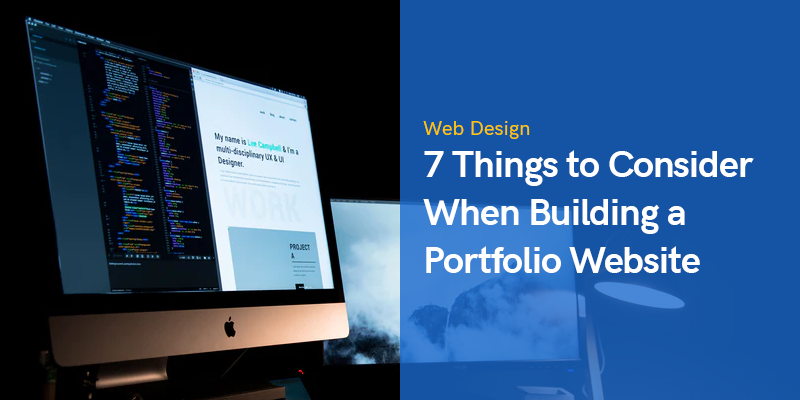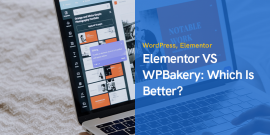
7 Things to Consider When Building a Portfolio Website
When getting new clients and selling your services better, the first thing you must do is create a robust portfolio website. You can’t just go out there with feedback from a third-party platform (like Upwork) or a bunch of offline files to showcase your work and services. That not only looks unprofessional, but it also doesn’t provide clarity on your level of expertise and the number of services you offer.
On the flip side, having a portfolio means you will waste less time replying to emails and more time promoting your services.
Things to Consider When Building a Portfolio Website
That said, there is a significant degree of competition for nearly all online work, including web design, development, and more. So it would be best if you focus on creating a portfolio website that really stands out.
Design a Compelling Landing Page
Creating an eye-catching landing page is one of the best ways to ensure that your site gets tons of hits and that companies and clients actually check out your portfolio. Instead of using a content management system where framework and theme design are pre-defined, you can use a site builder to design your portfolio website.
Unlike CMSs, a site builder allows you to completely control your design; you can customize everything from headers to footers with just a few clicks. That is especially useful when you gear your services towards design and focus more on graphics and photography.
You don’t have to spend much time on web development or learning to code. Just follow the design principles to build your online portfolio with creatively-styled pre-built templates or design everything from scratch.
Create Visually Appealing Brand Aesthetics
The next most important thing that freelancers often overlook is visual brand aesthetics. In order for your site to become a brand, it first has to look like a brand.
Instead of using free stock photos that rarely even make sense, use real photographs that represent your service and your real self if possible. For instance, if you are selling a photography service, use your own images instead of using photos from online platforms. Just make sure to get them properly edited so they look perfectly professional.
Similarly, if your service showcases a product, it would make more sense if the images you use are authentic. That means you’re the one who originally snapped the photos rather than a generic graphic design or your supplier’s official product photographs.
Work on User Experience
User navigation is the part of the design that influences your portfolio website’s bounce rate. In simpler words, a site optimized for UX and navigation won’t get many sales for its products or services.
UX is primarily about designing your site so that your customers can easily understand what you’re about and are awestruck by the presentation of your services. Here are some quick tips to improve your website users’ experience enormously.
- Navigation – Though it goes without saying, simple navigation helps your user surf around quickly. Things like adding pages to the menu, enabling breadcrumbs, etc., will simplify navigation just fine.
- Graphic elements – When describing a service, you can use icons or artwork to showcase your portfolio better.
- Website speed – A slow loading site will reduce your conversions and affect Google ranking as well. So as a general rule of thumb, try to speed up your site to not more than 3 seconds load time. Start by optimizing images, using CDNs (Content Delivery Networks), and so on.
- CTAs – The click-through rate decides how well a user can find the details about your services.
Optimize for the Search Engine
The Google search engine helps you promote your portfolio and did you know that 92.41% of the search engine segment is controlled by Google. For instance, if someone searches your name, a properly SEO-optimized page will bring up your portfolio in the top three spots. However, your portfolio will stay hidden in the sandbox if SEO was done improperly.
Check for Usability (optional)
Usability is a website feature that influences how well the site’s purpose is served. You can either hire usability testing experts or check it yourself. Though this is not necessary (business sites mostly use it), it ensures that your portfolio site actually showcases the specifics in the best way possible.
Simply put, a good usability helps your potential customer surf around your portfolio site, and get in touch in little to no time.
Over to You
So that was our take on some of the most crucial things you can do when designing a portfolio website. When you are done with the primary elements mentioned above, you can look for others to enhance your portfolio. These include displaying testimonials from real users, promoting your portfolio on social media, asking your clients to drop a tweet, creating videos about your work ( make sure to edit the clip, though), running paid ads, and so on.
Recommended Posts

Elementor VS WPBakery: Which Is Better?
April 29, 2024

Top 6 Free Windows Screen Recorders for Your Personal Blog
February 8, 2024
Understanding Website Content Security Policy in 2024
January 10, 2024